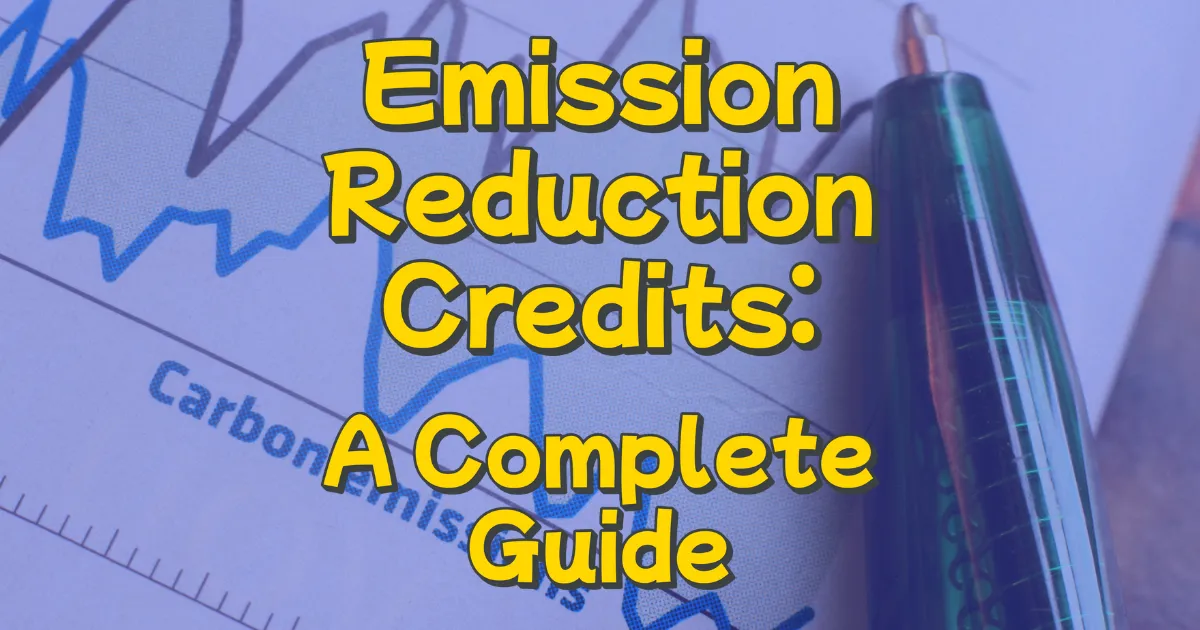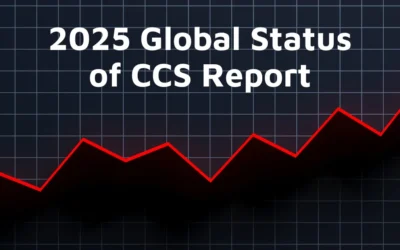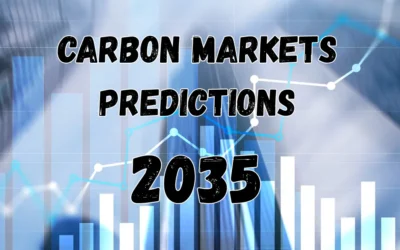Emission reduction credits (ERCs) enable large corporations to offset unavoidable greenhouse gas emissions through verified carbon reduction projects. This comprehensive guide explains how Fortune 500 companies can implement effective ERC strategies using biochar, regenerative agriculture, and direct air capture technologies to enhance ESG performance, meet regulatory requirements, and accelerate net-zero commitments. Follow our implementation framework to develop a robust emission reduction credits program that delivers measurable climate impact.
Beau Parmenter
Introduction: The Strategic Value of Emission Reduction Credits
As global climate targets tighten and stakeholder scrutiny intensifies, Fortune 500 companies face pressure to comprehensively address their carbon footprints. Emission reduction credits have emerged as a critical tool in corporate sustainability arsenals, offering a market-based mechanism to compensate for emissions that cannot be eliminated through operational improvements alone. Unlike conventional carbon offsets, ERCs emphasize additionality, permanence, and rigorous verification, ensuring investments deliver authentic climate impact rather than merely checking compliance boxes.
According to the World Economic Forum, over 20% of Fortune 500 companies have made net-zero commitments, creating unprecedented demand for high-quality emission reduction credits. This guide provides sustainability leaders with a roadmap for developing and implementing a strategic ERC program that aligns with corporate goals and delivers measurable environmental outcomes.
What Are Emission Reduction Credits?
An emission reduction credit represents one metric ton of carbon dioxide equivalent (tCO2e) that has been removed, avoided, or sequestered from the atmosphere. These credits enable corporations to compensate for emissions they cannot yet eliminate through direct operational changes.
ERCs typically fall into two categories:
Verified Emission Reduction (VER) Credits
VER credits correspond to emission reductions that have already occurred and been independently verified. Third-party auditors assess project baselines, monitor performance, and certify outcomes under standards like Verra’s Verified Carbon Standard, Gold Standard, or American Carbon Registry. The verification process typically involves:
- Establishing a credible emissions baseline
- Implementing monitoring protocols
- Conducting regular field assessments
- Applying conservative calculation methodologies
- Issuing credits only after verification is complete
Companies purchase VERs when they need immediate offsets – ideal for quarterly ESG reporting, annual compliance obligations, or responding to stakeholder demands for immediate climate action.
Projected Emission Reduction (PER) Credits
PER credits represent anticipated future reductions from planned projects. Developers model emissions baselines, project expected removals, and establish comprehensive monitoring frameworks.
PERs offer several strategic advantages:
- Early investment in promising carbon removal technologies
- Securing credits at lower prices before demand increases
- Supporting innovative projects that might otherwise lack funding
- Creating long-term partnerships with project developers
- Hedging against future carbon price volatility
Research from BloombergNEF indicates that PER credits for high-quality carbon removal projects could appreciate 5-10x by 2030 as net-zero commitments drive demand, making them an attractive strategic investment for forward-thinking corporations.
How ERCs Help Corporations Achieve ESG and Regulatory Compliance
Integrating emission reduction credits into a corporate sustainability portfolio delivers three core benefits:
Enhanced ESG Reporting and Investor Relations
ERCs generate quantifiable, third-party verified data that integrate seamlessly with established reporting frameworks:
- CDP Scores: ERCs can improve performance in the “Emissions Reduction Initiatives” and “Targets” categories
- SASB Disclosures: Provide metrics for the “Air Quality” and “GHG Emissions” accounting standards
- GRI Reports: Support disclosures under Standards 305-1 through 305-5
- TCFD Assessments: Demonstrate proactive climate risk management
A 2022 study by S&P Global found that companies with robust emission reduction strategies incorporating high-quality carbon credits outperformed peers in ESG ratings by an average of 12 points.
Regulatory Alignment and Compliance Assurance
As carbon regulations proliferate globally, emission reduction credits provide a flexible compliance mechanism:
- California’s Cap-and-Trade program accepts specific offset protocols
- The EU Emissions Trading System (ETS) allows limited use of international credits
- Canada’s Output-Based Pricing System incorporates offset provisions
- Emerging regulations in Asia and Latin America increasingly recognize verified credits
By building a diversified portfolio of emission reduction credits, companies can navigate complex regulatory landscapes and minimize compliance costs across jurisdictions.
Net-Zero Acceleration and Climate Leadership
For “hard-to-abate” sectors – steel, cement, aviation, shipping – emission reduction credits bridge the gap between current technological limitations and long-term decarbonization solutions.
They enable companies to:
- Make credible progress toward net-zero commitments while developing technological solutions
- Address Scope 3 emissions that lie outside direct operational control
- Support climate innovation through early-stage project financing
- Demonstrate climate leadership to customers, employees, and communities
High-Impact Emission Reduction Credit Projects: Implementation Strategies
Selecting the optimal mix of emission reduction credit projects requires balancing short-term needs with long-term climate goals. Here are three high-impact categories with specific implementation strategies:
Biochar Carbon Sequestration
Scientific Basis:
Biochar production converts biomass carbon into a stable form that resists decomposition for centuries. Research published in Nature Communications indicates that biochar can sequester 0.5-2 tons of CO2e per ton of feedstock processed, with residence times exceeding 1,000 years in many soil types.
Implementation Strategy:
- Supply Chain Integration: Identify agricultural or forestry waste streams within your supply chain that could serve as biochar feedstock
- Technology Deployment: Invest in modular, containerized pyrolysis units that can be deployed near biomass sources to minimize transportation emissions
- Monitoring Protocol: Implement soil carbon measurement protocols using spectroscopic analysis and core sampling to verify sequestration
- Co-Benefit Maximization: Structure projects to deliver agricultural productivity gains, creating shared value with farming communities
Case Example:
Microsoft’s investment in Pacific Biochar generated emission reduction credits while improving soil health across 10,000 acres of California farmland, sequestering 25,000 tons of CO2e annually.
Regenerative Agriculture
Scientific Basis:
Regenerative practices – cover cropping, reduced tillage, rotational grazing—build soil organic carbon while improving ecosystem health. Research in the Proceedings of the National Academy of Sciences demonstrates potential sequestration rates of 0.3-1.0 tons of CO2e per acre annually, depending on soil type and climate.
Implementation Strategy:
- Supplier Engagement: Develop transition incentives for agricultural suppliers to adopt verified regenerative practices
- Technical Assistance: Fund extension services and peer-to-peer learning networks to accelerate adoption
- Digital MRV: Deploy remote sensing, soil sensors, and blockchain verification to create transparent, low-cost monitoring systems
- Stacked Credits: Structure projects to generate both carbon and water quality credits where applicable
Case Example:
General Mills’ regenerative agriculture program has converted over 115,000 acres to regenerative practices, generating emission reduction credits while improving watershed health and biodiversity.
Direct Air Capture (DAC)
Dynamic Carbon Credits’ plant-based Direct Air Capture (DAC) technology harnesses nature’s most efficient carbon capture mechanism – biosynthesis – enhanced through cutting-edge biotechnology. Our proprietary approach cultivates specialized high-carbon-sequestering plant varieties in controlled environments, optimized to extract CO2 directly from ambient air at rates 20-40 times more efficient than conventional forests.
Scientific Basis
Our plant-based DAC systems combine rapid-growth biomass cultivation with advanced carbon fixation pathways. Unlike traditional DAC that relies on energy-intensive chemical processes, our biogenic approach requires minimal external energy inputs while achieving comparable carbon removal rates. Research conducted with our university partners demonstrates carbon capture efficiency of 2-4 tons CO2e per square meter annually – far exceeding conventional nature-based solutions.
Implementation Strategy:
- Modular Deployment: Our plant-based DAC units are designed as scalable modules that can be deployed near corporate facilities, creating visible carbon removal assets that demonstrate climate leadership.
- Biomass Conversion: Captured carbon is permanently sequestered through our proprietary biomass-to-biochar conversion process, ensuring carbon remains locked away for 1,000+ years.
- Real-Time Monitoring: Each plant-based DAC installation includes IoT-enabled sensors that provide continuous carbon capture data, viewable through our client dashboard.
- Co-Located Benefits: Units can be integrated with corporate campuses, providing additional benefits like improved air quality, reduced heat island effects, and enhanced employee well-being.
Corporate Benefits
- Lower Cost Per Ton: Our plant-based approach delivers carbon removal at 30-50% lower cost than conventional chemical DAC technologies.
- Immediate Scaling: While chemical DAC faces significant scaling constraints, our plant-based units can be rapidly deployed and begin capturing carbon immediately.
- Compelling Storytelling: The visible, living nature of our solution creates powerful ESG narratives that resonate with stakeholders and enhance corporate sustainability branding.
- Multiple Value Streams: Beyond carbon credits, our plant-based DAC generates valuable biomaterials that can be incorporated into corporate supply chains as sustainable inputs.
Building Your Emission Reduction Credits Program: A Six-Step Framework
Implementing an effective emission reduction credits program requires systematic planning and cross-functional collaboration. Follow this framework:
Step 1: Baseline Assessment and Goal Setting
Conduct a comprehensive carbon inventory across Scopes 1, 2, and 3. Identify emission hotspots and prioritize direct reduction opportunities. Set specific targets for residual emissions to be addressed through emission reduction credits, including:
- Volume of credits needed annually
- Budget allocation per business unit
- Timeline for scaling credit purchases
- Preferred project types and geographies
Step 2: Standards Selection and Quality Criteria
Develop clear quality criteria for emission reduction credits, including
- Recognized certification standards (Verra, Gold Standard, ACR, CAR)
- Additionality requirements
- Permanence guarantees and buffer pools
- Verification frequency and methodology
- Co-benefit priorities (biodiversity, community development)
Step 3: Portfolio Strategy Development
Design a balanced portfolio of emission reduction credits that addresses different time horizons and risk profiles:
- Short-term (1-3 years): Verified credits for immediate compliance and reporting
- Medium-term (3-7 years): Mix of verified and projected credits
- Long-term (7+ years): Early investment in next-generation carbon removal
Allocate investment across technology types to balance cost, risk, and permanence considerations.
Step 4: Procurement and Partnership Development
Establish procurement mechanisms and developer relationships:
- Direct project investment for strategic priorities
- Forward purchase agreements to secure future supply
- Spot market purchases for flexibility
- Industry consortia participation to aggregate demand
Implement blockchain-based tracking systems, such as those offered by Northern Trust, to ensure transparency and prevent double-counting.
Step 5: Integration with Corporate Systems
Embed emission reduction credits into existing corporate processes:
- Financial planning and capital allocation
- ESG data management platforms
- Internal carbon pricing mechanisms
- Sustainability reporting workflows
- Executive performance metrics
Step 6: Communication and Continuous Improvement
Develop a transparent communication strategy around your emission reduction credits program:
- Regular stakeholder updates on credit performance
- Project storytelling with measurable impacts
- Clear articulation of how credits complement internal reductions
- Annual program review and optimization
Measuring Success: Key Performance Indicators
Track these metrics to evaluate your emission reduction credits program:
- Carbon Impact: Total tCO2e offset, percentage of corporate footprint addressed
- Financial Efficiency: Average cost per tCO2e, price trend over time
- Portfolio Quality: Permanence duration, verification strength, additionality assessment
- Co-Benefits: Hectares of ecosystem protected, community livelihoods improved
- Stakeholder Response: ESG rating improvements, investor feedback, customer engagement
Conclusion: Transforming Climate Commitments into Action
Emission reduction credits represent a powerful tool for Fortune 500 sustainability leaders navigating the complex journey to net-zero. By implementing a strategic mix of biochar, regenerative agriculture, and direct air capture projects, companies can address residual emissions while supporting climate innovation. The six-step framework outlined in this guide provides a roadmap for developing a robust emission reduction credits program that delivers measurable environmental outcomes, regulatory compliance, and stakeholder value.
As the voluntary carbon market matures and quality standards strengthen, early movers in premium emission reduction credits will secure competitive advantage through preferential access, lower costs, and enhanced climate credentials. The time to develop your emission reduction credits strategy is now.
ERCs directly support corporate sustainability strategies by:
- Enhancing ESG Reporting: Providing transparent, measurable data that integrates seamlessly into ESG frameworks (CDP, SASB, TCFD, GRI).
- Ensuring Regulatory Compliance: Helping companies meet mandatory carbon reduction schemes, emission trading systems (ETS), and emerging climate regulations.
- Supporting Net-Zero Goals: Allowing corporations to offset emissions that cannot be eliminated through operational improvements alone, enabling ambitious net-zero commitments.
Types of Emission Reduction Credits Offered by Dynamic Carbon Credits
Dynamic Carbon Credits specializes in advanced ERC solutions specifically designed for Fortune 500 companies:
DCC Biochar Production
- What it is: Biochar is a stable form of carbon produced through pyrolysis of organic material, effectively sequestering carbon and improving soil health.
- Corporate Benefits: Long-term carbon sequestration, improved agricultural productivity, and alignment with circular economy initiatives.
DCC Regenerative Agriculture
- What it is: Agricultural practices that restore soil health, biodiversity, and ecosystem resilience, resulting in significant carbon sequestration.
- Corporate Benefits: Supports sustainable supply chains, and biodiversity goals, and enhances corporate reputation through positive environmental impacts.
DCC Direct Air Capture (DAC)
- What it is: Advanced plant-based technology capturing CO2 directly from ambient air through specialized high-carbon-sequestering plants, permanently sequestering carbon through biomass conversion.
- Corporate Benefits: Scalable, measurable, and permanent carbon removal solution with 30-50% lower costs than conventional DAC, ideal for ambitious net-zero targets.
Benefits and Measurable Outcomes of ERCs
Investing in ERCs delivers clear, quantifiable outcomes for Fortune 500 companies:
- Carbon Footprint Reduction: ERCs provide verified emission reductions that directly support ESG reporting and sustainability targets.
- Cost Savings and Risk Mitigation: Proactive investment in ERCs reduces future regulatory compliance costs and mitigates risks associated with carbon pricing mechanisms.
- Regulatory Compliance and Market Leadership: Demonstrating proactive compliance positions companies as sustainability leaders, attracting ESG-focused investors and enhancing brand reputation.
Ready to Take Action?
Connect with Dynamic Carbon Credits today for a personalized consultation. Discover how our advanced carbon credit solutions can help your organization achieve its sustainability goals and lead the climate revolution.






